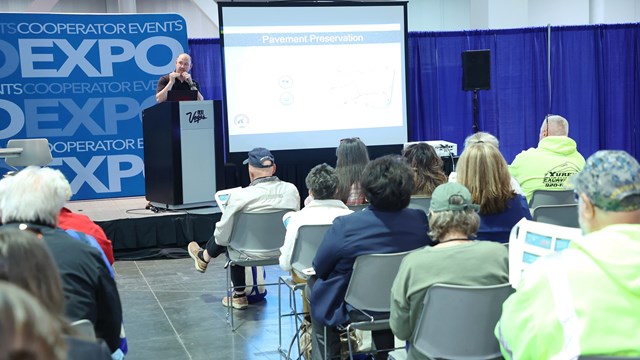Among the keys to successful governance of residential communities is continuity. The most basic of democratically elected units, co-op, condo, and HOA boards are the custodians of their community’s welfare, success, and continued operation. Over time, the experience and insight accrued by board members, directors, or trustees are the compass and rudder that steer and stabilize the community.
That being said, as board service is a volunteer opportunity, board members do not serve indefinitely—or at least, they shouldn’t. Ideally, communities hold elections at regular intervals, resulting in some board members being replaced through attrition or by resident vote, while others remain on the board to maintain the aforementioned continuity and institutional memory.
In some rare cases, an entire board may be replaced in a single election. In either scenario, successful integration of new board members—or even whole boards—is crucial for the continued health of the community.
The Peaceful Transfer of Power
“It’s always good to have new blood,” says Richard Brooks, a partner at Marcus, Errico, Emmer, & Brooks, a law firm located in Braintree, Massachusetts. “But the history of a property and knowing that history firsthand is also important. That’s what you lose when replacing board members. New board members don’t have that firsthand experience, though over time they will develop it. Not knowing the history of the property, especially the mechanicals, warranties, service contracts, etc., can become a real problem.”
“Each new board member comes into their role with the best of intentions,” says Jaime Sikorski, a vice president with AKAM Management of New York and Florida. “Each has a unique skill set and their own perception of how the property has been run in the past. When assuming responsibility from an effective board, the transition is often smoother than when new board members step into the role after their predecessors have suffered imbalance. In those cases, some triage is often needed to repair the actions taken by the former board—as well as residents’ perception of them.”
Alison Phillips, vice president with FirstService Residential in their Canton, Massachusetts, office, adds, “For many new board members, the biggest struggle is the real estate terminology they have to learn to understand and do their jobs. They have no experience; they don’t know how anything runs. Are the board and association strict about using Robert’s Rules of Order for meetings, for instance? It can be a culture shock for new board members, and overwhelming. One of the best ways to help is new board training.”
Training Day
Early intervention in the form of training is the most effective way to bring new board members—or even a whole new board—up to speed and keep things running smoothly. “The key is training,” says Chris Popoli, regional property manager with Denali Management in New Jersey. “We offer this to all of our boards and board members, whether newly elected or returning. As a volunteer position, board service is a lot of work, and requires a real devotion to the community. All board members have a fiduciary responsibility to follow their own governing documents, as well as local, state, and even federal laws. They have a responsibility to run their community like a business and approach every decision based on that premise. Therefore, training board members is very important and something we take very seriously. An educated and trained board makes everyone’s job much easier and allows for smooth transactions between the board and their property manager. If you have the proper processes and procedures in place, and training available for your boards, then the transition should be very easy.”
The manager can and should provide information to new board members about expectations and some basic terminology, explains Phillips, including property management terminology, so that new board members understand what is being discussed. It’s also good to have a written code of conduct for new board members, she suggests, so they understand the rules and their goals and responsibilities, as well as how to interact with management and other board members and residents.
Staggered Terms
One effective way to maintain continuity on your board is to stagger board terms. In other words, don’t elect all board members in the same year and for the same term length. If you have seven board members, for instance, create a three-year cycle where two members run for election in year one, two in year two, and three in year three. This will provide that there is always someone on the board with at least a year of experience in the position.
“Staggered terms help because there’s always someone who knows the history of the property on the board,” says Brooks. “It’s like the U.S. Senate. The terms of the senators are staggered with roughly one third of senators up for reelection every two years during their six-year terms. Some stay in office and share their experience. Staggering terms provides continuity and historical knowledge. For condo and HOA boards, we generally recommend that terms should be three years and be staggered by thirds—that way, two-thirds of board members have knowledge at all times. We try to change documents for clients for this when necessary.”
Sikorski concurs. “Staggered terms provide for a running knowledge of board actions, goals, and intentions,” he says. “Often, it helps to reduce a radical, changing-of-the-guard impact, which can be jarring for owners and shareholders. It can also provide an influx of new ideas and priorities. Some properties’ governing documents allow for varying term lengths, such as one-year, two-year, and three-year terms—but this type of staggering can often create a disparity between the agendas of board members, leading to unnecessary strife.”
Keeping it Real
Along with strategic term limits, there are a few other steps and policies boards should consider to optimize their operations and promote transparency. “First,” says Phillips, “there should be a code of board conduct to keep things above board and operating. Mutual respect and confidentiality are very important. There should be a baseline expectation on day one before anyone jumps into what’s happening at the property. New board members—actually, all board members—should review the past six months’ minutes and manager’s reports to get informed and up to speed. New people can then ask questions. We offer webinars for new board members and board members in general as a resource to learn how to be on the board. Everyone should take it, and retake it if they’ve been on the board for a while.”
Communication between board members, and with the community and management, is among the most important aspects of any board, tenured or new. “As such,” Sikorski says, “management must…assist boards in accurately presenting their message via the best channels for their community. In addition to standard letters and memorandums, virtual town halls are a great way to reach the majority of owners and shareholders, particularly if recordings or recaps are distributed afterwards. Colorful and informative quarterly newsletters can also be a great tool to communicate the status of items and property reminders.”
When a new board or new board members are elected as a result of discontentment with their predecessors, it’s important for the newcomers to offer an olive branch to the opposing side. “The most important thing in this situation,” says Popoli, “is to be transparent about everything. Not only about what happened in the past, but also moving forward. Boards sometimes forget that all owners are entitled to know what is going on with their property, or their investment(s). The first step in this process is usually holding a community meeting with the owners. The board should prepare for that meeting with financials, audits, or any information they have on file to help explain to the owners what happened. They should not call out individuals during such meetings, but refer to them as ‘the board,’ strictly stick to the facts, and make sure not to speculate. It is essential to have as much community involvement as possible, and to not be afraid of feedback from owners who are involved.”
Quick, efficient integration of new board members or even a whole new board is critical for the continued smooth operation of any residential community, be it condo, co-op, or HOA. The key factors to making this happen are transparency, training, and, where possible, continuity.
Cooper Smith is a staff writer/reporter for CooperatorNews.










Leave a Comment